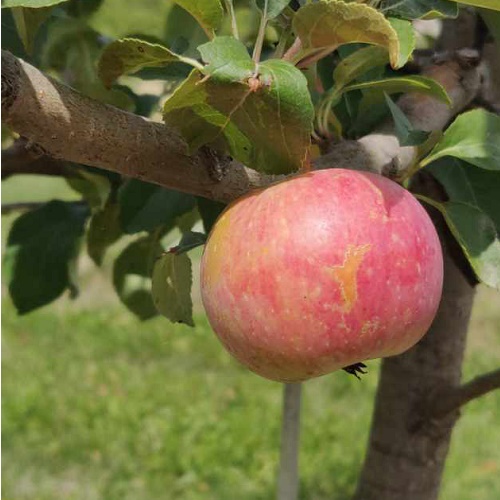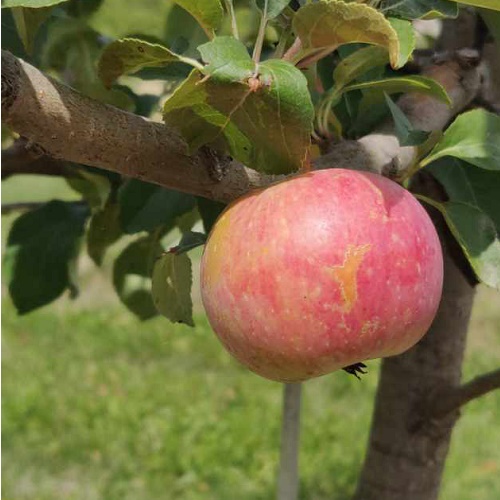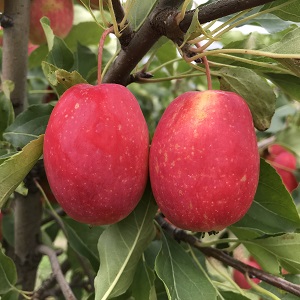Due to CFIA regulations we cannot ship plants outside of Canada and cannot ship fruit trees or grape vines to BC.
You are $500.00 away from a 10% discount
Home » Shop » Trees » Apple » Edible Crabapple »
Crabapple : CHESTNUT Large Semi-Dwarf (B118)
$53.95
Fabulous, complex flavour in a golf ball-sized fruit! Chestnut has been known to win apple taste tests with its crisp, sweet yellow flesh that is nutty with a hint of vanilla. Reddish bronze fruit hangs on the tree long after ripening and is ideal for dessert, cider, pickling or sauce. With large, aromatic white blossoms, this disease resistant variety makes a great ornamental landscaping addition.
SEMI-FERTILE* | ZONE 3 | HARVEST: EARLY SEPT.
Edible Crabapple Product Overview
Crabapples
The reasons for planting a crabapple tree are many and varied. Commercial orchardists value the pollination benefit of their extravagant blooming, while some homeowners simply enjoy the fragrant and elegant beauty of the spring blossom show. Others have discovered the unexpected pleasurable eating experience some varieties provide. A renewed interest in cider making is also fueling a fresh appreciation for the crabapple contribution. What’s more, their innate cold hardiness and naturally compact form opens the opportunity for almost anyone to plant one.
1.25-2m (4-6') bareroot trees
Only logged in customers who have purchased this product may leave a review.
Growing Tips
Apple Growing Tip
Besides selecting the most disease resistant varieties, there are
a few simple things to do to have better apples.
- Fertilize under the outer edges of your trees. There are no feeder roots next to the trunk. A well fed tree stays healthier. (Adequate calcium in the soil also helps so that apples keep longer.)
- Pick up fallen fruit and compost, dispose of, or feed to livestock (where possible).
- Rake up leaves in the fall and compost them away from the orchard.
- Prune trees to encourage light and air to reach the inside of the tree.
- Provide bird nesting sites near your orchard. A variety of orchard companion type plants will attract native pollinator insects and also encourage birds to come and eat insect pests.
Other Edible Crabapple
Browse other products in this rootstock and zone.





Reviews
There are no reviews yet.